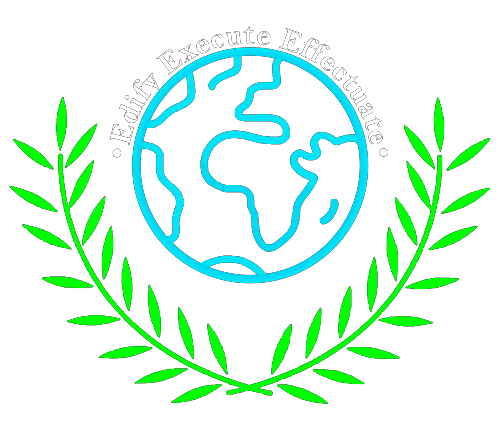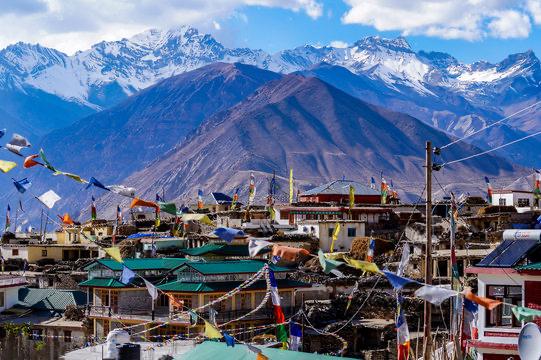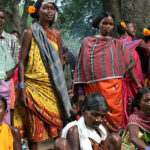Debolina Bhattacharyya
Akshatha Allen G.
Sweta Tevatia
Abstract:
The Indian Himalayan Region (IHR) is rapidly emerging as a key area for ecotourism. The resulting influx provides both significant economic opportunities and socio-cultural challenges to local communities. This article explores the vital role of community-focused ecotourism in the IHR for balancing economic resilience with socio-cultural preservation, presenting policy suggestions aimed at fostering sustainable tourism practices. By focusing on three sectors: education, corporate responsibility, and government regulation, the importance of community-centric development, equitable revenue-sharing, and cultural conservation is emphasized to ensure long-term sustainability and local empowerment.
Keywords:
Indian Himalayan Region, Community Inclusive Ecotourism, Sustainable Tourism Policies, Cultural Ecosystem Preservation, Sustainable Tourism Development.
Introduction:
Tourism has emerged as a key driver of economic growth. The sustainable tourism market size in India is anticipated to reach USD 151.88 million by 2032, with a rapid CAGR of 19.3 percent from 2022 to 2032. (Ministry of Tourism, 2022)
The Indian Himalayan Region (IHR) is a diverse geographical entity that spans across 13 Indian States and Union Territories and boasts a population of nearly 50 million. Tourism in this region has become one of the fastest-growing economic sectors in India. It is expected to grow at an average annual rate of 7.9% from 2013 to 2023. (Aayog 2018a).
From a cultural perspective, the ecosystem diversity of the region has given rise to a wide range of ethnocultural diversity. Individual communities in the IHR are closely attuned to their local surroundings. (Tiwari, C., & Rani, M.,2024)
However, challenges such as unregulated tourism, infrastructural development, waste management, and maintaining a delicate balance between economic growth and environmental conservation persist that directly impact the local communities. (Kuniyal et al 2003). Ecotourism can provide a viable and durable means of support for local people residing in ecologically sensitive areas, it might enable the protection of local environments as components of the ecotourism economy against threats from extractive industries, as conservation generates revenue that can help to ward off environmentally destructive forms of development. (Vanderheiden & Sisson, 2010).
This article aims to formulate policy suggestions that could be implemented through education, by corporate tourism enterprises and governmental bodies to improve ecotourism/ sustainable tourism practices in the Himalayan belt, specifically to ensure socio-cultural and economic benefits to local communities and tribes.
Towards a Community-focused model of Ecotourism:
Although an exact definition of ecotourism is currently debated, the International Ecotourism Society defines it as “responsible travel to natural areas that conserves the environment and improves the well-being of local people” (TIES, 2006). This focus on local beneficiaries is enshrined in the World Tourism Organization’s Global Code of Ethics, which calls upon tourism to “promote human rights and, more particularly, the individual rights of the most vulnerable groups”. (UNWTO, n.d.)
This can be done by prioritizing the Social Exchange theory in the context of tourism, which claims that locals would encourage the expansion of the industry if they perceive the positives as exceeding the negatives. (Rasoolimanesh et al. 2015, p. 336). According to the World Tourism Organization, this can be accomplished by ensuring that locals “share equitably in the economic, social and cultural benefits they generate, and particularly in the creation of direct and indirect jobs resulting from them”. (UNWTO, n.d.)
However, Ecotourism can be regarded as a kind of “credence good”. (Vanderheiden & Sisson, 2010). Ken Simpson posits that it can ultimately violate the dignity of local indigenous peoples through commodification. As he notes, “Pseudo-cultural happenings are then created purely for the benefit of visitors, and family events such as church services, weddings and even funerals are routinely presented for tourist enjoyment” (Simpson, 2009). This observation aligns with Kate Soper’s description of a “consumer-citizen” i.e. a fusion between privately-oriented consumer preferences and socially-oriented citizenship values (Soper, 2007). Tourist behavior in the IHR often demonstrates this consumerist tendency.
To mitigate this issue, The National Strategy for Sustainable Tourism (2022) formulated policy recommendations. These can be tailored with a special focus on the community perspective.
Restructuring Education: Consumer Culture to Community Conservation
Tourism-specific education began in India in 1983 when the Ministry of Tourism founded the Indian Institute of Tourism and Travel Management (IITTM). Education can play a major role in bringing about behavioural change that benefits the community as a whole. Sustainability related curriculum has previously been demonstrated as having influenced the students to adopt a more sustainable lifestyle (Fien et al., 2002).
Currently, the tourism curriculum has significant gaps, especially regarding the application of sustainability concepts for community welfare. The present practice of education is “to compete and consume rather than to care and conserve”(Suneeth et al., 2021). Only a limited consideration has been given to EfS (Education for Sustainability) in tourism (Mansour & Abd El-Kafy, 2018).
Wilson & Heidt (2013) found that curriculum crowding and a lack of awareness on the conceptualization of sustainability leads to the exclusion of information on vulnerable groups. To better understand the socioeconomics of these communities, we must study the five specificities: inaccessibility, fragility, marginality, diversity, and niche. All of these directly impact the lives of people in IHR.(Tiwari & Rani, 2024). A few suggestions are:
-
Inclusion in the curriculum:
A cursory survey of the prescribed environmental science syllabus of the CBSE and ICSE boards reveals that very limited knowledge on sustainability practices pertaining to local tribes of IHR has been included. As Butler and Menzies (2007, pp. 19–20) argue, introduction of ecotourism in curriculum can enhance local knowledge and provide benefits to local communities. Textbooks can include areas such as community development priorities, local histories of colonization, and education around environmental threats and community activism. India can borrow from the Australian educational framework and introduce ecotourism-specific degree programs at the tertiary level.
-
Digital Learning:
Virtual/Augmented reality tools can provide virtual visits to sensitize students about the local tribal cultures. Alternating these with field trips will also help mitigate the issue of carrying capacity and cultural commodification in IHR. e-Pathshala AR (Augmented Reality) App is an initiative of NCERT under the aegis of MHRD-Government of India is a step in this direction where the App aims to enable students to go beyond textbooks. (Central Institute of Educational Technology, n.d.). In higher education institutes, educational trips, tourism seminars and industry collaborated workshops can further inform the students into becoming responsible tourists.
-
Addressing Cultural Dilution:
Unregulated tourist influx in IHR has led to cultural dilution (Aayog, 2018a). This can be addressed through visitor learning which is an important component of community-based ecotourism (CBET) since it focuses on knowledge of the local culture and livelihood. (Higgins-Desbiolles, 2009).
-
Skill Development for Sustainable Tourism:
Tour guides play a pivotal role in educating visitors, as they are the frontline staff that determine the experiences and conduct of tourists (Geldenhuys, 2003). Thus, tour guides/operators need to be well-trained to facilitate an exchange of ideas between community culture and visitors. The Ministries of Education and Culture can jointly provide skill enhancement courses for this purpose.
-
Community learning through participation:
Community participation with other stakeholders like private sectors, NGOs and administration not only provides local solutions to local issues but also facilitates community learning in more innovative solutions. This creates awareness that ultimately ensures the success of conservation strategies.
Koh Yao Noi Ecotourism project in Thailand is the best example of community participation in conservation against a surge in commercial tourism. The locals, in collaboration with NGOs, formed the Koh Yao Noi Ecotourism club, a community-based cooperative, to implement solutions. (Walter & Reimer, 2011)
Reconstructing CSR: Corporate Cultural Responsibility:
Culture can be commodified through the lives of host communities and the creation of the tourist experience, called a pseudo-event. (Institute of Peace and Conflict Studies & Lundup, 2013). The tourism industry can only prosper by committing to sustain the resources that attract tourists. (Youell, 1998).
Corporate Social Responsibility (CSR) has now become a mainstream global business strategy and can be defined as carefully considered corporate action that seeks to create the optimum trade-off between the triple bottom line (people, planet and profits). (Aguinis, 2017) The three approaches to CSR are: (i) the shareholder approach (companies owe their first responsibility to shareholders), (ii) the stakeholder approach (all stakeholders are important, and businesses must protect stakeholders interests during their operations) and (iii) the societal approach (businesses owe a responsibility to society) (Madanaguli et al., 2021).
The final approach must be prioritized in CSR to focus on community welfare to address the issue of exploitation by the industry. A few measures that can be implemented by the industry are:
-
Community-Centric CSR:
Tourism enterprises in the Himalayan belt must involve local communities in the decision-making process. In the Amadubi village of 1,000 tribal members in the eastern Jharkhand state, the locals have set stipulations forbidding their displacement, further deforestation and a limitation of 10 tourists at a time on the carrying capacity. “They have taken ownership of their own resources by implementing ecological sustainability and self-governance,” according to Tribal rights activist Anubhav Shori. (Sarkar, 2024). This must become the norm for tribes in IHR.
-
Equitable Revenue-Sharing Models:
Government agencies, settler businessmen and middlemen reap all the profits instead of the tribes who are employed to dance and cook for tourists with no ownership in the project (Sarkar, 2024). CSR activities must include developing partnership agreements for local communities to ensure they are made share-holding members of these enterprises.
-
Cultural Impact Assessments:
Private enterprises must set up Grievance Redressal systems to ensure that community attitudes remain positive to their presence. They must regularly conduct cultural impact studies internally to help regional planners and local decision-makers. (Allen et al. 1988, p. 20; Belisle and Hoy 1980, p. 85).
-
Cultural Integrity in Tourism:
Tourism enterprises must arrange for educational campaigns, workshops hosted by locals, possibly using interactive experiences, to sensitize Foreign Tourist Arrivals (FTAs) to the cultural and historical backgrounds of the communities. Awaken, an Ecuadorian foundation, has immersive travel programs which allow travelers to appreciate the heritage of the country while giving back to the communities.
-
Sustainable Business Practices in Employment:
All supplies and services must be sourced from local providers with a percentage of jobs dedicated for local women. Undiscovered Mountains, an adventure travel company, is a blueprint for responsible tourism. They offer a range of tours and adventure holidays to the Himalayas, while ensuring support for local suppliers and guides. Their carbon offsetting initiatives with Mossy Earth have rehabilitated communities and their environments.
-
Cultural Sensitizing Initiatives: Yu et al. (2018) pointed out that frontline employees are the bridge between tourism companies and customers, which are the key to the sustainable development of tourism companies. Enterprises must invest in cultural education and training programs for frontline employees, including short-term skill courses and upskilling initiatives as a part of CSR activities. This will enhance the cultural awareness in the industry. He (2018) also found that the fulfillment of CSR has a direct role in promoting employees’ organizational citizenship behavior.
Reformulating Government Regulations: Community-Centered Governance
The 2030 Agenda for Sustainable Development, particularly SDG target 8.9, emphasizes the need to “devise and implement policies to promote sustainable tourism that creates jobs and promotes local culture and products”. (KPMG, 2024). While the existing national policy framework including the National Strategy for Sustainable Tourism and Responsible Traveler Campaign, followed by the Swadesh Darshan 2.0 outlines a broad strategy approach to ecotourism, the Indian Himalayan Region(IHR) demands localized customization of policy and stakeholder engagement that adequately considers its unique socio-economic, environmental, and cultural contexts for comprehensive local community development.
A significant gap in the policy is that the very definition of ecotourism itself fails to adequately include: the equitable sharing of income via active community participation and the conservation of heritage and culture, both of which are fundamental to effective ecotourism practice. (Spicer B. 2020).
-
Community-based Ecotourism model:
The Kerala Declaration on Responsible Tourism (2008) requires “the economic participation of local people as direct owners in the business of tourism not just as beneficiaries of charity”. (Vanderheiden & Sisson, 2010). Considering that the extensive tourist activities in ecologically sensitive regions have been associated with negative impacts, the majority of which are borne by the host communities, a proactive approach towards operationalizing the community-based ecotourism(CBE) model (Kukreti, 2021), could better realize the villages’ sustainable development, including the conservation of biological diversity.
-
Adjusted GDP measure of welfare: Pseudo-ecotourism
fails to meet the standards of authentic ecotourism and leads to the detriment of societies instead of empowering them. (Spicer B. 2020) In the Himalayan region, some areas suffer due to mass tourism, while others have not yet fully reached their potential due to gaps in addressing regional disparity and tourism seasonality. (Kuniyal, J. C., 2023). Historically, communities in IHR have been marginalized by policymakers who blame remoteness and the accompanying socio-political instability. (Tiwari & Rani M, 2024). Therefore, the government policy framework could develop a new adjusted GDP measure of welfare tailored to the IHR that adequately considers the long-term viability of costs and benefits of economic activities and growth (Kakwani,1993), simultaneously translating tourism development into community welfare.
-
Localized Tourism Governance:
Decentralized tourism activities tailored to the carrying capacity thresholds of specific regions can unlock localized tourism potential while protecting fragile ecosystems. (Kuniyal et.al, 2023). Active regulation ensures that tourism remains a positive force for development rather than a cause of socio-cultural and environmental degradation.
-
Strengthening Oversight with a Himalayan Authority:
The Niti Aayog report calls for the development of a comprehensive database on the IHR and the setting up of a “Himalayan Authority” as an overarching institution to coordinate the integrated and holistic development of the Himalayan states. (Aggarwal, 2018). This could be transformed into a potential platform to address local community representation, equitable income needs, and securing local traditions.
-
Certifications:
The Ministries of Culture and Tourism can jointly expand the paradigm of Sustainable Tourism Certifications to provide a Cultural Integrity rating to enterprises that succeed in tribal community inclusion.
-
Gender-inclusive measures:
Effective participation of local communities requires gender-inclusive tourism policies in decision-making, feedback loops, and consequent insight incorporation into policy changes. The ambiguity in policies and their implementation plans has to be overcome through detailed, actionable roadmaps or timelines for achieving specific objectives.
Additional Insights:
Digitalization and Artificial Intelligence can be utilized in all three sectors. For education, VR/AR technology can provide adequate alternatives for generating awareness and respect. In the tourism industry it can ease bookings and the process of virtual tours while ensuring publicly accessible records. Geographic information system (GIS) technology and big data analytics can be incorporated to manage tourist traffic, waste disposal and more. (KPMG. Make the Difference., 2024). New Zealand has successfully used GIS and big data analytics to optimize tourism management.
Developing a digital public infrastructure (DPI) with robust mechanisms for monitoring the implementation of policies or evaluating their effectiveness through quantifiable metrics, conducting regular audits of stakeholder enterprises and ensuring accountability must be a priority for the government. Bhutan’s unique ‘controlled tourism’ model based on the principles of Gross National Happiness (GNH) enables ‘high value, low volume’ to ‘high value, low impact’ (Tourism Council of Bhutan, 2009)
By addressing these multifaceted socio-cultural dimensions of ecotourism in the IHR, this article aims to contribute to the ongoing discourse on responsible tourism practices and community-oriented sustainable development in this ecologically and culturally rich region. We hope that the insights and recommendations presented herein will catalyze positive change, fostering a harmonious coexistence of economic growth and environmental preservation in the Indian Himalayan Region.
Conclusion:
In conclusion, as tourism continues to grow in the ecologically sensitive area of IHR, careful policy planning and the integration of responsible practices are essential to ensure long-term sustainability and community welfare. Education is an essential tool in fostering awareness regarding the necessity for cultural preservation and environmental conservation among students, both foreign and domestic tourists as well as local communities. Introducing ecotourism-specific curricula, digital tools for virtual learning, and skill-enhancement initiatives can create responsible tourists among the future generations.
Corporate tourism enterprises play a crucial role in advancing community-centered policies and equitable revenue-sharing models. By focusing on local involvement in decision-making processes, and ensuring fair compensation, the tourism industry can help mitigate cultural commodification and promote genuine sustainable tourism.
Governmental bodies must develop customized policies that address the unique socio-economic and environmental challenges of the IHR. Implementing community-based ecotourism models, promoting gender-inclusive measures, and creating oversight mechanisms will facilitate the sustainable growth of tourism in this region. Ultimately, a collaborative approach among education systems, corporate entities, and governmental bodies is the key to achieving a balance between economic development and the preservation of cultural and environmental heritage.
References:
- Aayog, N. I. T. I. (2018a). Sustainable tourism in the Indian Himalayan region. Report of Working Group II, NITI Aayog, Government of India Available: https://niti. gov. in/writereaddata/files/document_publication/Doc2. pdf.
- Aggarwal, M. (2018). NITI Aayog proposes green cess for the Himalayan region. Mongabay India. https://india.mongabay.com/2018/10/niti-aayog-proposes-green-cess-for-the-himalayan-region/
- Aguinis, H., & Glavas, A. (2017). On corporate social responsibility, sensemaking, and the search for meaningfulness through work. Journal of Management, 45(3), 1057–1086
- Allen LR, Long PT, Perdue RR, Kieselbach S (1988) The impact of tourism development on residents’ perceptions of community life. J Travel Res 27(1):21. https://doi.org/10.1177/0047287588 02700104
- Baptista Alves, H.M., María Campón Cerro, A. and Vanessa Ferreira Martins, A. (2010), “Impacts of small tourism events on rural places”, Journal of Place Management and Development, Vol. 3 No. 1, pp. 22-37. https://doi.org/10.1108/17538331011030257
- Belisle FJ, Hoy DR (1980) The perceived impact of tourism by residents: a case study in Santa Marta, Colombia. Ann Tour Res 7(1):83–101. https://doi.org/10.1016/S0160-7383(80)80008-9
- Butler, C. F., & Menzies, C. R. (2007). Traditional ecological knowledge and indigenous tourism. In Elsevier eBooks (pp. 15–27). https://doi.org/10.1016/b978-0-7506-6446-2.50007-7
- Central Institute of Educational Technology. (n.d.). Augmented Reality/Virtual Reality |. https://ciet.ncert.gov.in/ar-vr
- Fien, J., Ai, I. T. P., Yencken, D., Sykes, H., & Treagust, D. (2002). Youth Environmental Attitudes in Australia and Brunei: Implications for education. The Environmentalist, 22(3), 205–216. https://doi.org/10.1023/a:1016571526997
- Geldenhuys, S. (2003). An ecotourism curriculum for higher education institutions. https://repository.nwu.ac.za:443/bitstream/10394/425/1/geldenhuys_s.pdf
- He, K. (2018). A Study of the Influence of the Enterprise Employee’s Responsibilities on the Organizational Citizenship Behavior of New Generation Employee. Journal of Management, 31, 33-43.
- Higgins-Desbiolles, F. (2005). More than an “industry”: The forgotten power of tourism as a social force. Tourism Management, 27(6), 1192–1208. https://doi.org/10.1016/j.tourman.2005.05.020
- Institute of Peace and Conflict Studies, & Lundup, T. (2013). Contemporary Ladakh: Culture, Commodification and Tourism. Retrieved January 7, 2025, from https://www.files.ethz.ch/isn/168466/IB238-LadakhFiles-TashiLundup-Tourism.pdf?utm_source=chatgpt.com
- Kakwani, N. (1993). The relationship between economic development and social welfare: A new adjusted GDP measure of welfare. Review of Income and Wealth, 39(3), 295–308. https://www.jstor.org/stable/27526990
- KPMG. Make the Difference. (2024). Sustainability in Tourism- Reimagining India’s sustainable tourism evolution. In kpmg.com/in. https://kpmg.com/in/en/insights/2024/03/sustainability-in-tourism-reimagining-indias-sustainable-tourism-evolution.html
- Kuniyal, J. C. (2023). Safety from numbers: Tourism in the Himalayas is not uniform; its impacts though are detrimental. Down To Earth. https://www.downtoearth.org.in/environment/safety-from-numbers-tourism-in-the-himalayas-is-not-uniform-its-impacts-though-are-detrimental-87949
- Madanaguli, A., Srivastava, S., Ferraris, A., & Dhir, A. (2021). Corporate social responsibility and sustainability in the tourism sector: A systematic literature review and future outlook. Sustainable Development, 30(3), 447–461. https://doi.org/10.1002/sd.2258
- Mansour, N., & El-Kafy, J. A. (2018). Integrating Sustainability into Education: At Egyptian Tourism and Hotel Faculties. Journal of Association of Arab Universities for Tourism and Hospitality, 15(3), 97–104. https://doi.org/10.21608/jaauth.2018.54012
- Mohan, Kukreti. (2021). Natural Resources And Policies For Community-based Ecotourism: An Uttarakhand Perspective. 11(4):128-136. Natural resources and policies for community-based ecotourism: an Uttarakhand perspective
- Mulà, I., Tilbury, D., Ryan, A., Mader, M., Dlouhá, J., Mader, C., Benayas, J., Dlouhý, J., & Alba, D. (2017). Catalysing change in higher education for sustainable development. International Journal of Sustainability in Higher Education, 18(5), 798–820. https://doi.org/10.1108/ijshe-03-2017-0043
- Nv, D., Kc, J., Prajapati, V. P., Chauhan, H., & Dhodi, R. K. (2024). Analysing tourism research in the Indian Himalayan region to identify gaps and propose sustainable development strategies. Journal of Mountain Research, 19(1). https://doi.org/10.51220/jmr.v19-i1.30
- Rabhi, A. (2011). Environmental Performance Rating and Public Disclosure: Strategic policy to promote corporate environmental management. Institute for Global Environmental Strategies. http://www.jstor.org/stable/resrep00737
- Sarkar, S. (2024, April 15). ‘Destructive’: tribes in India at risk as expanding tourism plans threaten cultural identity, ecosystem. South China Morning Post. https://www.scmp.com/week-asia/lifestyle-culture/article/3258931/destructive-tribes-india-risk-expanding-tourism-plans-threaten-cultural-identity-ecosystem?module=perpetual_scroll_0&pgtype=article
- Simpson, K. 2009. Exploding the Myth of Ecotourism. In Ecotourism and Environmental Sustainability, eds. J. Hill and T. Gale, 223–237. Burlington, VT: Ashgate.
- Spicer, B. (n.d.). A literature review of ecotourism in India: Policy implications and research gaps. Routes: The Journal for Student Geographers, 1(1), 41–50. University of Birmingham. https://routesjournal.org/2020/08/16/r2034/
- Soper, K. 2007. Rethinking the Good Life: The Citizenship Dimension of Consumer Disaffection with Consumerism. Journal of Consumer Society 7 (2): 205–229.
- Suneeth, B. G., Kashyap, S., Reddy, G. M., & Kaushal, V. (2021). Resilience adaptations in tourism Education for the Post-COVID-19 era – A Study of India. In Emerald Publishing Limited eBooks (pp. 291–302). https://doi.org/10.1108/978-1-80071-511-020211020
- Teoh S. The Governmentality Approach to the Business of Sustainable Tourism: Bhutan’s Tourism Governance, Policy and Planning.https://researchportal.murdoch.edu.au/esploro/outputs/conferencePaper/The-governmentality-approach-to-the-business
- The International Ecotourism Society (TIES). 2006. TIES Global Ecotourism Factsheet. www.ecotourism.org
- Tiwari, C., & Rani, M. (2024). Trouble in paradise: Evaluating the effects of unorganized tourism on the Himalayan ecology. In The Himalayas in the Anthropocene (pp. 165–183). Springer. https://doi.org/10.1007/978-3-031-50101-2_7
- UNWTO. (n.d.). Global Code of Ethics for Tourism. UN Tourism. https://www.unwto.org/global-code-of-ethics-for-tourism
- Vanderheiden, S., & Sisson, M. W. (2010). Ethically Responsible Leisure? Promoting Social and Environmental Justice through Ecotourism. Environmental Philosophy, 7(2), 33–48. http://www.jstor.org/stable/26168041
- Wani, M.S., Bhat, M.S., Alam, A. et al. (2023). Assessing indigenous community’s perspectives and attitudes toward tourism development impacts in the northwestern Himalayas, India. Socio Ecol Pract Res 5, 63–78. https://doi.org/10.1007/s42532-022-00134-6
- Walter, P. G., & Reimer, J. K. (2011). The “Ecotourism Curriculum” and Visitor Learning in Community-based Ecotourism: Case Studies from Thailand and Cambodia. Asia Pacific Journal of Tourism Research, 17(5), 551–561. https://doi.org/10.1080/10941665.2011.627930
- Wilson, E., & Von Der Heidt, T. (2013). Business as usual? Barriers to education for sustainability in the tourism curriculum. Journal of Teaching in Travel & Tourism, 13(2), 130–147. https://doi.org/10.1080/15313220.2013.786337
- Xu, L., & Lee, S.-H. (2018). CORPORATE SOCIAL RESPONSIBILITY AND ENVIRONMENTAL TAXATION WITH ENDOGENOUS ENTRY. Hitotsubashi Journal of Economics, 59(2), 61–82. http://www.jstor.org/stable/44866221
- Youell, R. (1998). Tourism: An introduction. Addison Wesley Longman Ltd.
- Yu, C. P., Lin, C. P., & Yao, C. (2018). Influence Mechanism Research of Frontline New Generation Employees’ Service Performance in Tourism Industry: Perspective of Social Exchange Theory. Tourism Tribune, 33, 53-65.






